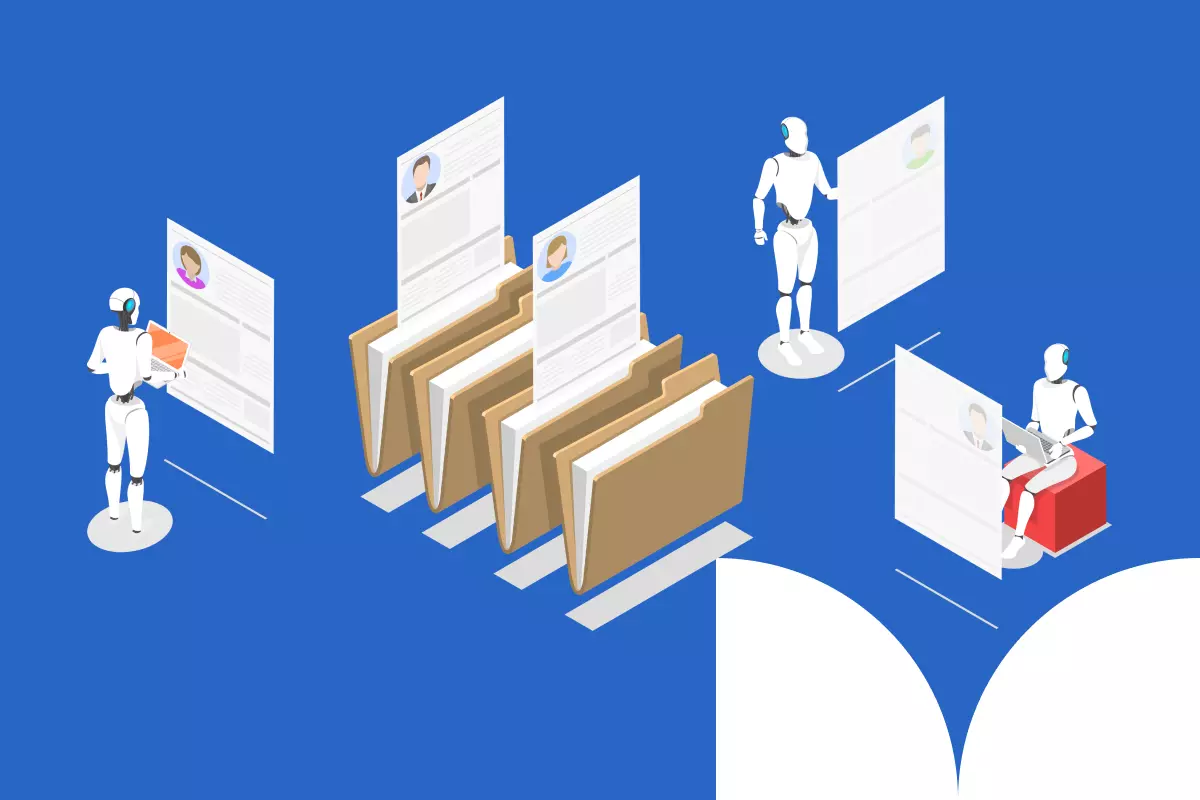AI in Employee Selection: Charting a thoughtful path forward

Welcome to a journey into the world of artificial intelligence (AI) in the employee selection process. At first glance, AI seems like a revolutionary tool, poised to transform how we approach hiring. It promises not only efficiency but also a level of objectivity that human recruiters might struggle to match.
Welcome to a journey into the world of artificial intelligence (AI) in the selection process. At first glance, AI seems like a revolutionary tool, poised to transform how we approach hiring. It promises not only efficiency but also a level of objectivity that human recruiters might struggle to match.
But as we peel back the layers, a complex picture emerges—one where ethical considerations take center stage. This exploration is about the capabilities of AI as well as its impact on fairness and equity in the workplace.
AI's role in the early stages of selection
AI in selection is more than a buzzword; it's a paradigm shift.
Imagine sifting through thousands of resumes in minutes, pinpointing the most promising candidates with futuristic precision. That's the allure of AI. By using algorithms to analyze data from resumes and job descriptions, AI can match candidates with roles more effectively than traditional methods.
But this efficiency comes with many questions. How does AI determine who's a good fit? What criteria does it use, and are these criteria free of biases that have historically plagued human decision-making?
Ethical implications

Since AI algorithms are trained on existing data, they may risk inheriting and perpetuating biases present in that data. For example, if an AI tool is trained predominantly on data reflecting a particular gender or ethnic group's success, it may inadvertently favor candidates from that group. This isn't a flaw in AI's ability to learn; rather, it's a reflection of the data it's been fed.
Compounding this challenge is the “black box” nature of AI, where the rationale behind its decisions is often opaque. This is akin to a chef serving you a dish without revealing its ingredients. You wind up eating an unknown mystery meal. Because of this, it’s difficult to assess or rectify biases in AI's decision-making.
Ensuring AI aligns with ethical standards requires transparency, curiosity, and (at the very least) conceptual understanding of AI concepts by HR professionals using it. Otherwise, this could lead to discriminatory hiring practices, albeit unintentionally.
Learning from real-world examples
Examples from various industries where AI has been implemented in selecting the best candidates reveal both successes and challenges. For instance, remember how Amazon’s AI recruiting tool discriminated against women? Amazon's system inadvertently displayed bias by learning a preference for male candidates, and then penalizing resumes containing terms like "women's" and unfairly downgrading graduates from two all-women's colleges.
This outcome was due to the predominantly male composition of Amazon's software engineering workforce at the time, whose resumes were used to train the new AI software. When the tool was tasked with identifying resumes resembling those in its training data, it inevitably perpetuated the demographic imbalance present in the workforce. And this was in 2014!
Case studies like these still serve as valuable lessons, highlighting the importance of continuous monitoring and adaptation in the use of AI for hiring. They demonstrate the potential pitfalls when AI isn’t used judiciously and the benefits when it's implemented with a keen eye on ethical considerations.
Mitigating AI bias
Overcoming biases in AI is a multifaceted challenge. Addressing this requires several crucial steps:
- Scrutinizing the data sets used for training AI, the design of the algorithms, and the decision-making processes.
- Conducting regular audits for bias.
- Ensuring transparency in decision-making algorithms.
- Taking into account a diverse range of perspectives in the hiring process.
- Educating stakeholders about AI and the potential for bias to foster an environment of responsible AI use.
The human element in AI selection

Despite the advances in AI, human oversight remains indispensable. AI can sort and suggest, but humans understand the subtleties and nuances of the hiring process. This includes recognizing cultural fit, potential for growth, and other intangible factors that AI might miss.
Integrating human judgment with AI's analytical capabilities offers a more balanced and complete approach to selection. It ensures decisions are not based solely on data, but also human insight and experience.
Balancing AI and human decision-making is like a well-coordinated dance. It requires harmony between technological efficiency and human intuition. AI brings speed and data-driven insights: humans offer empathy and contextual understanding. Together, they can create a more effective, fair, and inclusive selection process.
Future of AI in selection
Looking ahead, the future of AI in selection is one of cautious optimism.
The potential for AI to revolutionize hiring practices is immense, but this must be balanced with a commitment to non-discrimination, as well as all other principles and standards that underpin human rights. The key lies in ongoing research, development, and dialogue among technologists, recruiters, ethicists, and policymakers to ensure AI is used as a force for good in selection.
Remember: just as we fear our own cognitive biases in decision-making, we should be aware of AI's potential to amplify and replicate them on a grand scale. And if we think that we’re simply transferring the responsibility of decisions made in such a way to a more abstract entity such as AI, that’s not the case. Humans have the final say. Humans made the choice to use this software and should still be responsible for its outcomes.
Conclusion
As we journey with AI in selection, it's not just about reaching new technological heights. Yes, AI can streamline hiring and save precious time for strategic HR tasks. But it's not a magic wand.
Embracing new tech means weighing risks, costs, and sustainability. It requires a balance between leveraging AI to free up time for strategic work and not blindly assuming that newer is always better.
As we integrate AI into HR, let's do so with objective understanding of all its potentials, pitfalls, and the practicalities of maintaining these systems. In this dance with technology, let's lead with wisdom and strategy.